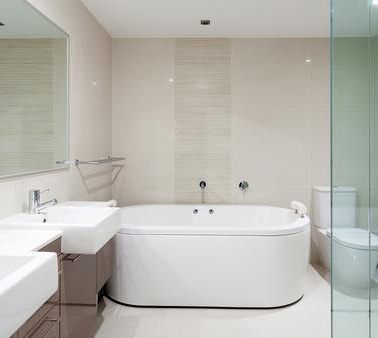These tips will provide you with everything you need to know for selecting a new vanity that fits your space, style.
Selecting a new vanity for your bathroom has an innumerable benefits. Not only can it completely revamp a space without requiring a full remodel, it is also unique way to enhance extra storage and ease for smoother morning routines.
1. Consider Size and Space
One of the first things to think about when selecting a new vanity for your bathroom is to consider what would be appropriate and adequate in terms of size and space. For instance, are you swapping out your old one because it’s too small? Are you planning to install a new vanity in a tiny powder room and need to find something small enough that would fit? Standard sizes vary from 600mm to 2000mm. The standard depth of a vanity, to wall in 430-550mm but there are certainly narrow depth options of 340mm & 380mm.
2. Measuring Is Key
Once you’ve decided on your ideal vanity size, you should confirm that you have enough clearance around any opening doors, shower stalls, and drawers, as there is nothing worse than installing a big new vanity and not being able to open the bathroom door all the way. In fact, you may even want to take some masking tape and mark out the dimensions to make sure you make the right choice.
3. Evaluate Your Sink Needs
Sinks—like the vanity cabinet itself—come in a range of sizes, depths, shapes, and types. Your vanity cabinet may require a specific type of sink, or it may even come with a sink, so be sure you read the product details carefully before you make your selection.
4. Review the Number of Sinks You Need
For larger bathroom with large vanities it is crucial to consider number of sinks, because more isn’t always better. While two sinks can help ease morning traffic, especially for large families, they also reduce countertop space. You may need to ask yourself: would a double sink with little countertop space be more useful than a single sink with more surface space? But for sure, on other hand, it enhances looks and functionality of vanity bringing more charm to bathroom.
5. Prioritize Storage or Easy Cleaning
The two installation types for bathroom vanity are either freestanding or wall-mounted. Freestanding vanities are the standard selection and typically provide more storage than their wall-mounted parts, as the cabinets are longer and rest either directly on the floor or are raised on legs.
While extra storage is always nice, it is important to note freestanding vanities are also known for being harder to clean, since there are more corners and nooks where dust can hang out around them.
6. Examine Your Existing Plumbing
If you’re installing a new vanity, you or your plumber will likely be doing some new plumbing work. Yet, it is critical to remember the location of the existing plumbing. Typically, freestanding vanities are more forgiving for irregular or off-center existing plumbing connections, and require only minimal alterations, if any, to the existing water supply or drain.
However, a wall-mounted vanity has less flexibility, and you may find that moving some of the plumbing is required which may result in additional cost and time.
7. Keeping Faucets and Sinks In Mind
Finally, faucets aren’t always included in a new vanity unless chosen, which may require a bit of research and coordination. If you do have to purchase the vanity or sink separately, take note of the number of faucet holes, how far apart they are, and how they should be installed.
Main consideration should be type of vanity top, type of sink and does the sink require a centre or widespread faucet? Does the faucet or sink come with a drain? Again, these questions can all be answered by carefully reading the product details, so be sure not to skimp on your research.

